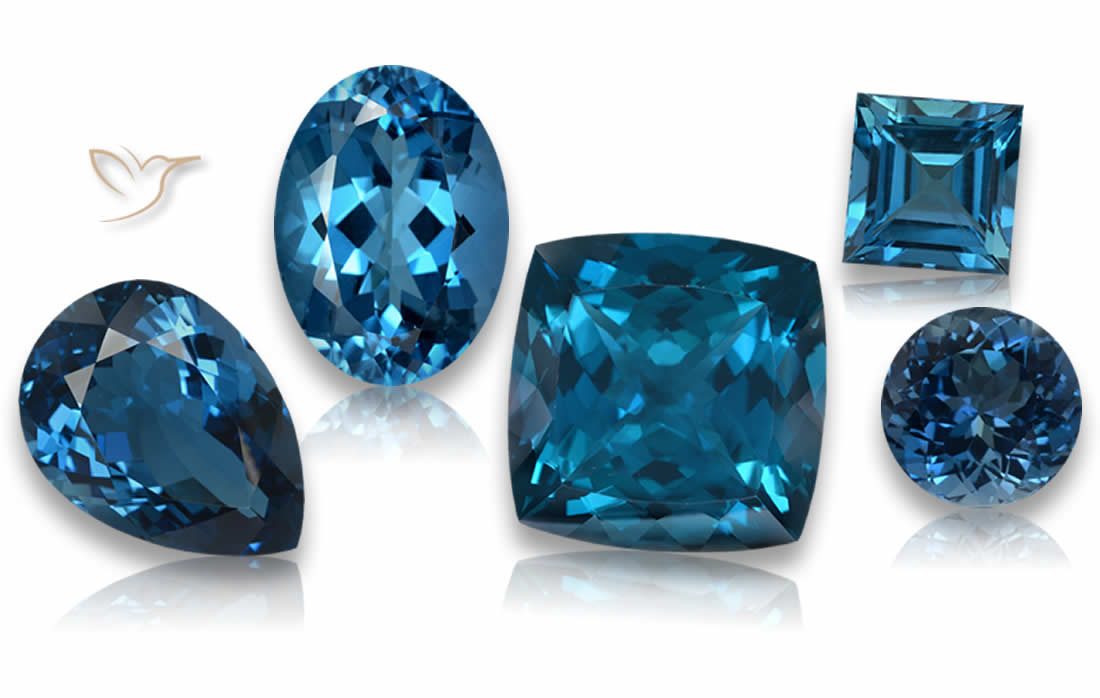London Blue Topaz

Introduction to London Blue Topaz
London blue topaz, a striking and sophisticated gemstone, is celebrated for its deep, rich blue hues that remind us of twilight skies. This captivating variety of topaz is particularly prized for its intense color, which can range from a dark, inky blue to a vibrant, electric shade, making it a popular choice in fine jewelry. Unlike lighter blue topaz, London blue is often created through a heat treatment process that enhances its natural beauty, resulting in a stone that exudes elegance and charm.
Popularity and Properties
It's no wonder blue topaz has become one of the top-selling gems in the jewelry world. What sets it apart? Well, blue topaz offers excellent hardness - scoring an 8 on the Mohs scale - and impressive brilliance, all at a very reasonable cost. That's a winning combination if you ask me.
Varieties of Blue Topaz
Blue topaz comes in both lighter and darker tones, commonly known in the trade as sky blue topaz, Swiss blue topaz, and London blue topaz. As with other blue gems, the more saturated shades generally hold higher value. So, in the topaz family, London blue is often seen as the most valuable. For a deeper dive into these shades, explore our detailed guide about blue topaz varieties.
Symbolism and Appeal
Among the blue varieties, London blue topaz stands out as the deepest and most intense in color. Its rich blue shade resembles the depths of the ocean. London blue topaz is associated with serenity and emotional balance - perfect for those seeking a gem with a bit of calming vibe.
Abundance and Pricing
The reason blue topaz remains so affordably priced is its abundance. Topaz naturally occurs mostly in white (colorless) or brown forms; true natural blue topaz is quite rare. Almost all blue topaz available today is produced by treating white topaz with heat and radiation. To learn more about its origins and characteristics, check out our comprehensive topaz gemstone information page.

How Topaz Gets Its Color
The color of topaz can be altered by irradiation thanks to its unique coloring mechanism. Most gems, like sapphire, get their hues from trace elements such as iron or titanium. Others, like peridot, are colored by elements in their core chemical makeup. But topaz is different - its color comes from "color centers," which are imperfections in the crystal lattice that affect how the crystal absorbs light.
The Treatment Process
London blue topaz is typically created by exposing the stone to radiation in a nuclear reactor. Fast neutrons from this process alter the color centers, producing that deep blue shade. Follow-up heat treatment often lightens any overly inky tones. Gems treated this way can be radioactive initially and may need months of storage for the radioactivity to decay to safe levels. Strict regulations are in place to protect consumers, cutters, and dealers who handle these stones regularly.
Frequently Asked Questions
What is London blue topaz?
London blue topaz is a variety of topaz gemstone known for its deep, intense blue color, often enhanced through treatment processes.
How does London blue topaz differ from other blue topaz varieties?
It has the deepest and most saturated blue shade compared to lighter options like sky blue or Swiss blue topaz.
Is London blue topaz natural?
Natural blue topaz is rare; most London blue topaz is created by treating colorless topaz with radiation and heat.
Why is blue topaz affordable?
Topaz is abundant, and the treatment process allows for large-scale production of blue varieties at low cost.
What is the hardness of London blue topaz?
It has a hardness of 8 on the Mohs scale, making it durable for jewelry.

